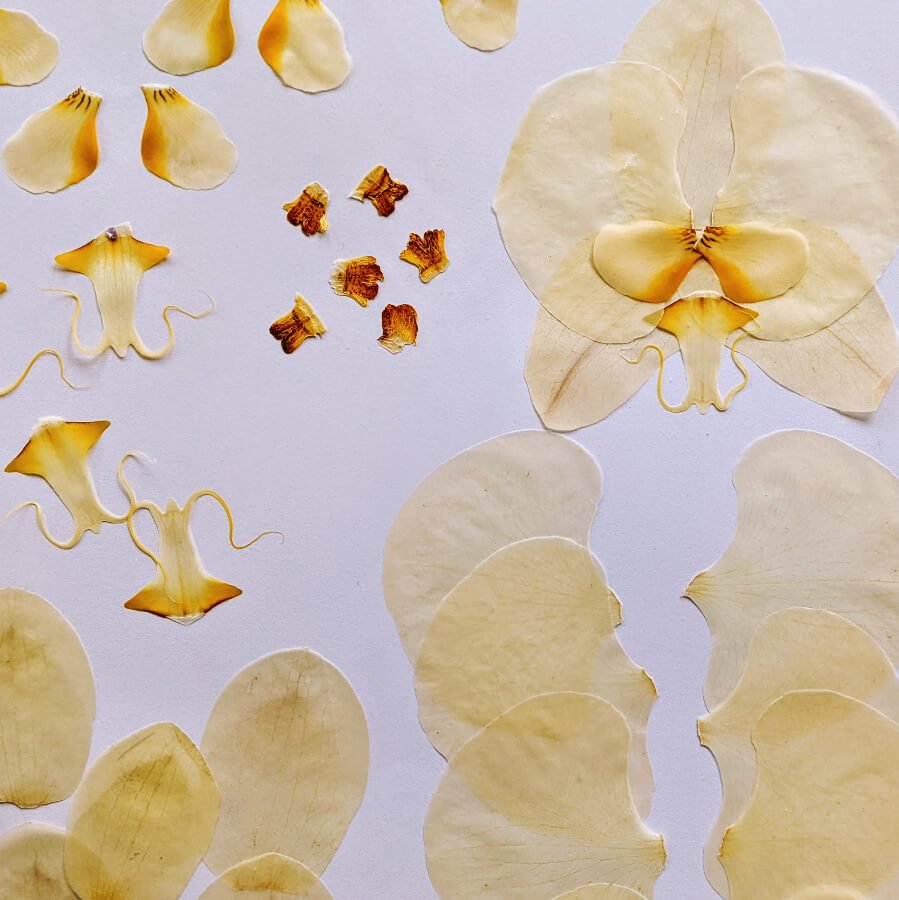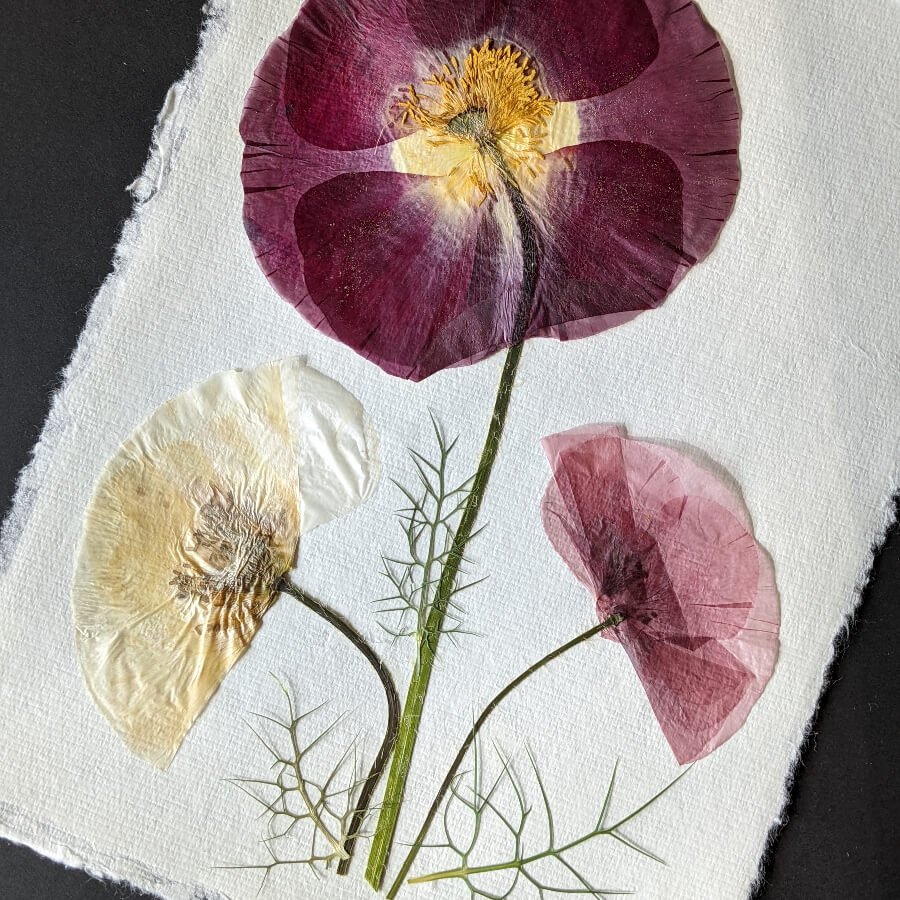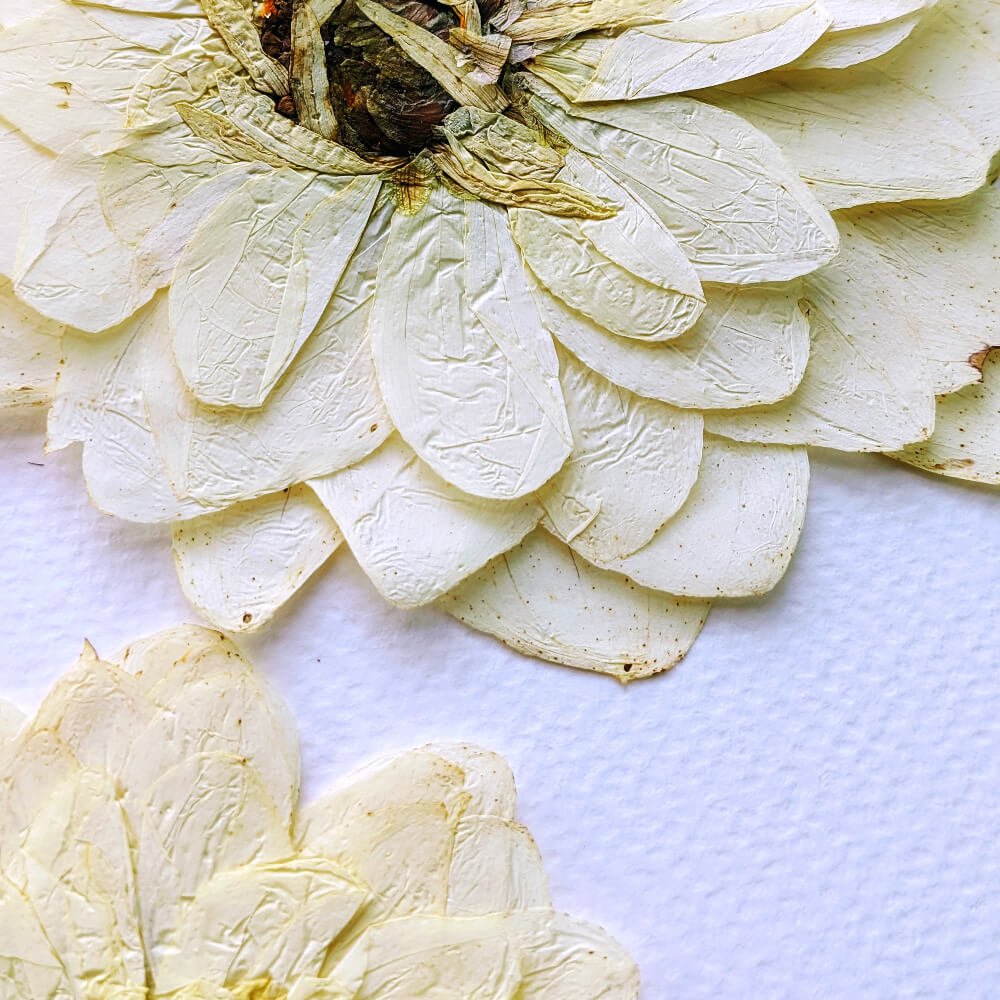My approach to flower preservation
I used to stuff my folktale books with weeds and wildflowers as I spent my childhood summers at my grandmother’s house. Invariably, I’d forget about them until the following summer. As I opened the same books on lazy afternoons a year later, crunchy leaves would fall out - a happy surprise followed by a pang of regret that they had browned and wrinkled.
Today, as I open my flower presses to check on the blooms from my cutting garden, a wedding bouquet or a special occasion arrangement, I see something completely different.
The inner beauty of the once-fresh flowers reveals itself in striking, unexpected detail. The colors are still vibrant and take on new gorgeous hues. The greenery is smooth, the petals are delicate and papery - some so thin they could melt under my fingers.
That’s the difference between simply pressing flowers and preserving them. Any flower can be pressed or dried. Flower preservation, on the other hand, is both art and science.
When I preserve flowers, I have two goals:
Capture their natural beauty in a form that will last for years (the “science”).
Reveal their hidden essence (the “art”).
The science of flower preservation: The basic steps
Anyone can press or dry flowers - it’s not really a secret. Here are the basic steps that I follow:
Work with the freshest possible flowers. When I harvest from my garden, it’s easy, although always a rush (I take “as fresh as possible” very seriously!). Usually, I put the flowers in the press immediately or within a few hours. This is critical to retain the best color and that “freshly picked” quality. For wedding bouquets or other arrangements, I work with clients in the Chicagoland area only to minimize any transit time. In quality flower preservation, each day the flowers are not in the press narrows the peak beauty window.
Use flower pressing or drying supplies that extract moisture the fastest way possible. For pressing, I use traditional flower presses (wood planks on top and bottom and alternating layers of cardboard and paper in between) secured with bolts and nuts. For drying, I use silica gel, which I regularly “recharge” to ensure the best water absorption.
Check on the flowers frequently. Flower preservation is not a set-it-and-forget-it process. I joke that each press or silica box is a baby that needs a regular diaper change. And that’s because flowers have a lot of water that often saturates the preservation medium. To make things even trickier, flowers with moisture-rich petals like orchids or puffy centers like sunflowers, are notoriously finicky to press. They require daily “diaper” changes (a.k.a. new paper and cardboard) and excellent air circulation (I stack my presses under a fan that works around the clock). Silica drying is a little more forgiving, but I still check weekly.
Store properly. Because I preserve thousands of flowers each year, organizing them is essential. I have settled on 4x6 transparent photo boxes for smaller flowers and greenery, and scrapbook flat boxes for larger ones (where I sandwich long-stem flowers in between scrapbook papersheets). I also save little silica packets and put them in each box. Everything is stored in drawers, away from natural light.
Handle with care. It’s very tempting to pick up pressed flowers with your fingers. But it’s a bad idea for two reasons: Both pressed and dry flowers will almost certainly break when touched, and oil and impurities from your fingers can stain the delicate petals. Instead, I use a variety of tweezers depending on the type of flowers. My favorite are the fine pointy ones, because they slide easily under the tiniest, most ethereal petals.
The art of flower preservation: Intuition and feeling
While the science of flower preservation can be taught and mastered with practice, the art is intuitive and deeply personal to each artist.
When I started experimenting with pressing and drying my cutting garden flowers, I followed in the footsteps of other artists.
But as I deconstructed the flowers and learned about their hidden beauty, I began to develop my own approach. It’s rooted in my deep love for growing flowers from seed and nurturing them until they are preserved in a piece of art or jewelry. The connection I feel to each flower I grow, harvest and preserve is hard to explain. After my family and close friends, my flowers will have a place in my heart forever.
The most surprising part of my flower preservation journey is how much more I have learned about flowers. Little “secrets” come to life when you take apart a flower in the pressing process - petal by petal, filament by filament.
Poppies, for example, have the most elegant symmetry I’ve seen in a flower. Pressed cinnamon basil retains its incredible fragrance. Each zinnia petal is attached to a future seed.
As a flower preservation artist, I want all these delightful details to be seen and appreciated in the final piece - not just by me but by you as well.
Recently I pressed a stunning peony and rose bridal bouquet. I knew I had to take each flower apart and reconstruct them after pressing. But I wanted to see how simply pressing a peony would compare to the deconstructed one. In other words, could just following the science of flower preservation be enough?
After removing the best petals, I put the remaining peony in the press. Two weeks later, the whole flower had a brown (and slightly moldy) center despite following the science. The petals melted into each other, dotted by brown spots, and they still felt moist and had visible wrinkles.
By contrast, the individual petals looked and felt like the finest silk. Smooth and flexible with beautiful pink blush, just like when they were fresh. Reconstructing the peony - or any other moisture-rich flower - might seem tedious and boring, maybe even disingenuous. It’s anything but. It feels like restoring an old painting, each little detail revealed with renewed vibrancy. To me, it’s flower preservation as an art form.
Give your treasured flowers a new life
I always offer free consultations to explore the best way to preserve your cherished flowers - fresh or already dried, no matter their shape. Please fill out my preservation inquiry form and I’ll get back to you as soon as possible.







